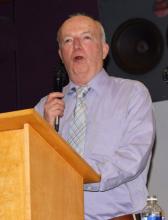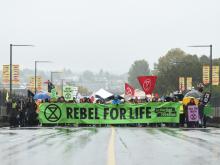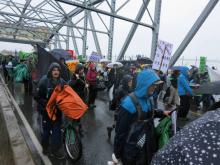Climate activists who practise peaceful civil disobedience are planning their second significant action in Vancouver in less than two weeks.
On October 7, the Vancouver chapter of Extinction Rebellion took over the Burrard Bridge for 13 hours before police ordered demonstrators to disperse.
In the end, 10 people were arrested for refusing to leave.




